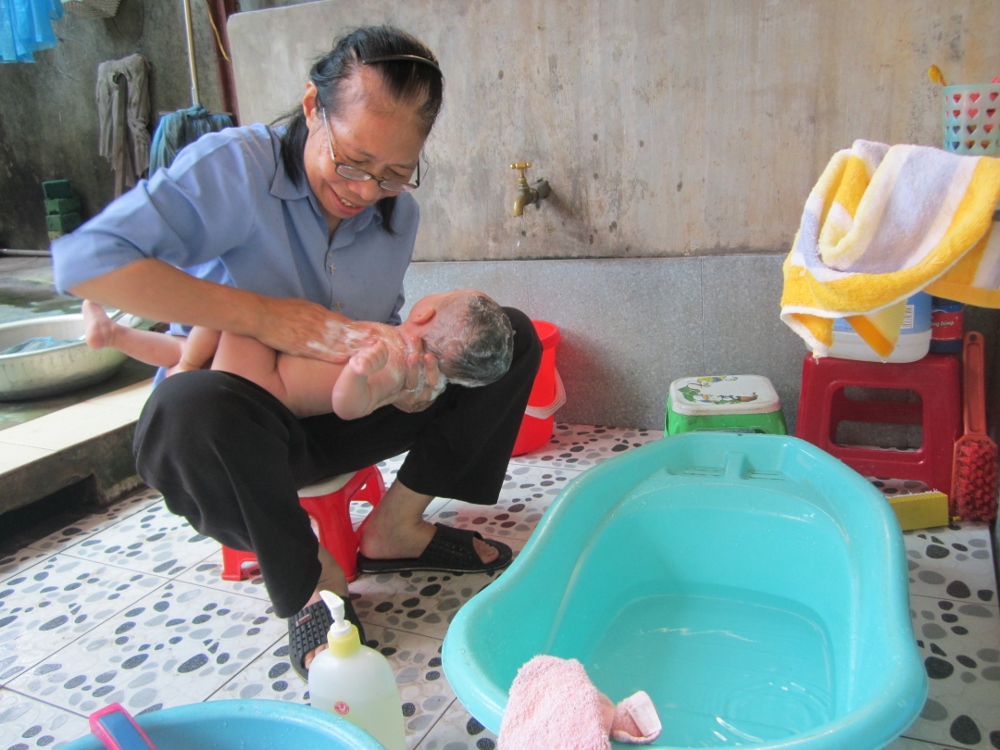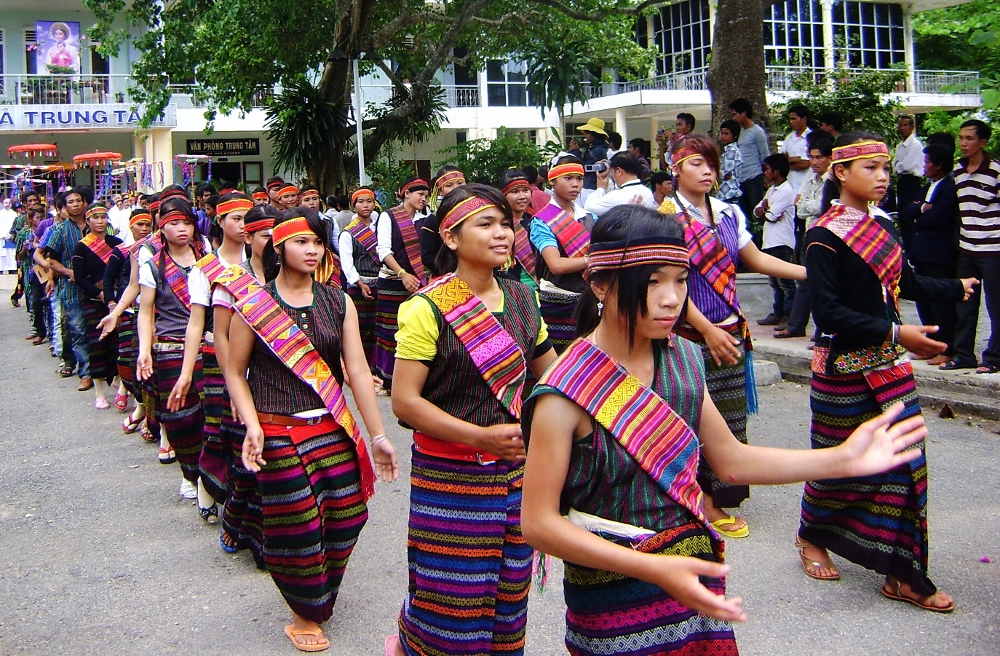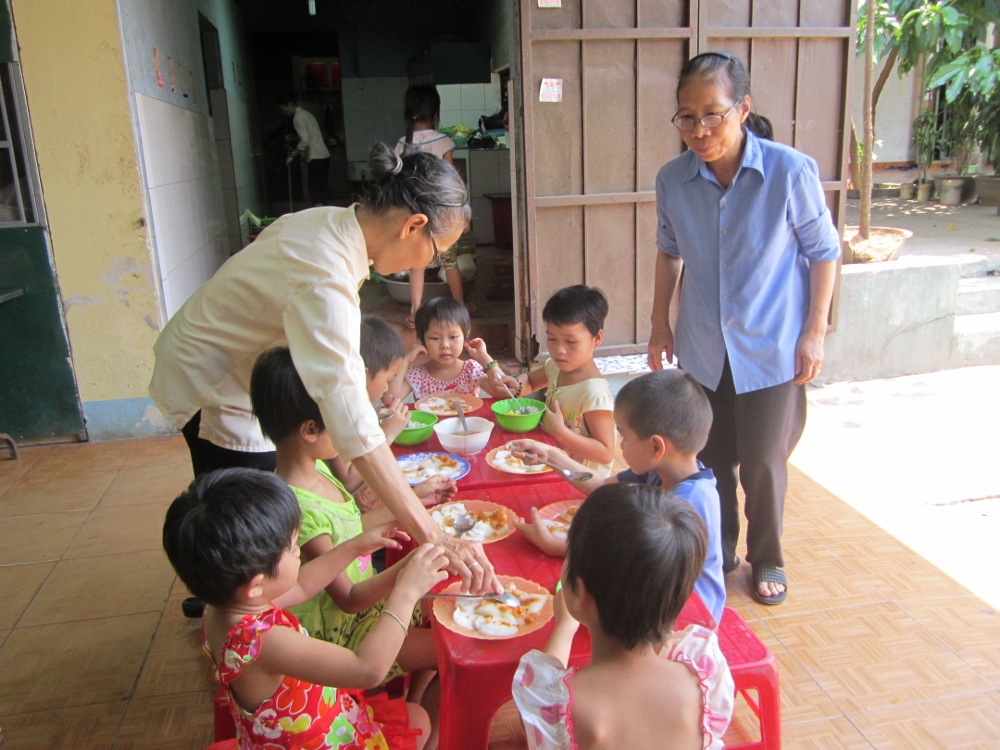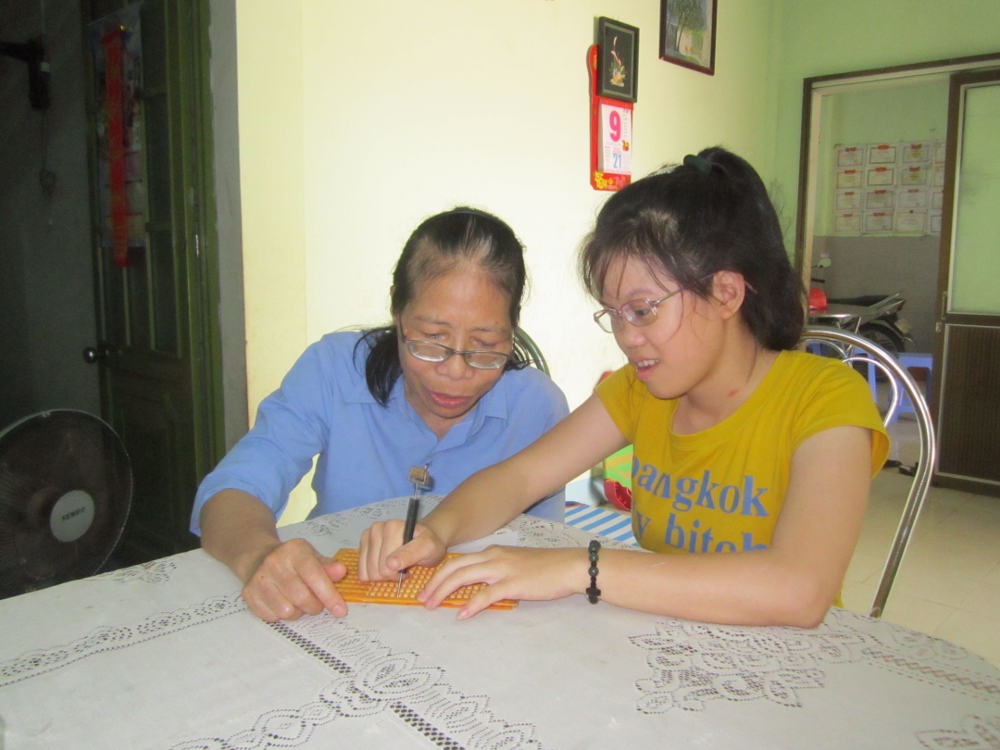
Dong Ha, Vietnam — More than two decades ago, Van Kieu ethnic minority villagers in the Dakrong District of Quang Tri Province, central Vietnam, traditionally buried babies alive together with their dead mothers as they believed the babies could be breastfed in the afterlife.
They observed the custom of leaving dead bodies in forests at sunset and then running home for fear that the souls of the dead would follow them and cause more suffering.
They also followed the practice of marriage between close kin as “connecting the family line.”
Now they have abandoned these outdated customs, thanks to Sr. Josephine Anna Tran Thi Hien of the Lovers of the Holy Cross of Hue, who has saved more than 100 children from these practices.
Hien started her ministry as a volunteer doctor among Van Kieu ethnic villagers in the district in 1996. She was expelled from the district in 2003 by government authorities, but she continues her ministry by regularly visiting and providing material support and health care for the Van Kieu.
The ethnic group has a largely animist belief system, holding that spirits reside in mountains, trees, rivers and animals. They use shamans to treat their illnesses, and consequently many have died while being taken to dispensaries.
Hien, who heads her religious community in Dong Ha City, recently talked with GSR about her efforts to work with Van Kieu ethnic villagers to end their old practices.
How did you persuade the Van Kieu ethnic minority villagers to abolish their custom of leaving dead bodies out in the open in favor of burial?
In 2000, I remember, for the first time another nun and I joined the funeral procession of a man from Cat village. People put the dead body wrapped in sedge mats in a hammock and carried it on their shoulders while walking on winding paths through forests. They stopped by a stream and displayed his belongings – such as bowls, rice, knives, bow and arrows, bills [money], tobacco pipe, cymbals and a living chicken – near the dead body and then ran home because they were so afraid of the dead.
We could not keep pace with them and got lost in the forest at dusk. We hid ourselves in bushes, praying to God. We were gripped with fear of the dark, insects and wildlife all around us.
Then five Catholic youths with flaming torches returned to look for us, calling my name. They found us and we arrived home at 8 p.m. We were so grateful and felt our fears leave us.
So we managed to teach local people how to make wood coffins and dig graves for burials. We also taught Catholics that, as people are created in God’s image and that their bodies would rise again on Judgment Day, so they should respect the bodies of the dead. And they started burying the dead in coffins in 2001. I feel this was a very important cultural, public health and religious event.

How did they respond to you at first?
Elderly villagers and village heads bitterly opposed burying the dead in coffins and accused me of showing no respect for their old customs. They argued that the ghosts of the dead would be kept inside the coffins, become angry and cause villagers to have illnesses and physical disabilities.
I told them that villagers contracted illnesses caused by dead bodies lying in the forest, not by ghosts. Pregnant women who drank water from streams polluted by dead bodies would make their children suffer diseases. Many had to sell their properties to pay for their medical treatment at hospitals.
They gradually adopted Christian burial.
Most Catholic villagers have given up their traditional funeral customs, and now they pray at home for those who have died before they are buried in the forest, as they do not have cemeteries.
Government authorities ban local people from cutting wood in the forest, so we give free coffins to poor people who could not afford them for their dead relatives.

What about their custom of burying living babies together with their dead mothers?
In 1998 a village official and two Van Kieu ethnic Catholics from Cat village came to my house at dawn and handed me a baby girl who was three months old, asking me to rear the baby. Her mother had just died, and elderly people decided to bury her on the following day in the belief that she could be with her mother and breastfeed in the afterlife. Her father wanted to save her and carried her in his arms, running at night to the officials for help.
This outdated burial custom often happened in remote mountainous areas.
I founded a group of 25 ethnic Catholics to do pro-life work. They provide rice, salt and clothes for poor people, visit patients and educate people to respect life.
We saved more than 20 babies from being buried with their dead mothers during the seven years I lived in the district from 1996 to 2003, when I was forced to leave there by the government. [The government prevents missionaries from working among ethnic groups for fear that it will lose power with ethnic groups. There are 54 distinct ethnic groups in Vietnam, and 53 of them are minorities making up 15 percent of the population.]
We also provided scholarships for children from 500 families. They finished high school, vocational center training and college and returned to work in the district. They helped villagers abolish old customs, and to completely abandon this custom in 2006.
How did you deal with their marriage customs?
Traditionally, Van Kieu men leave their children to their relatives and marry again just after their wives’ deaths. In some cases, they are obliged to marry their sisters-in-law after their brothers die. Widows are forced to leave their children with their parents-in-law before they remarry. If they want to bring up their own children, they have to get married to their late husbands’ relatives.
We encourage widowers and widows to bring up their children by themselves as a way to be faithful to their late spouses and told them that their children need their loving care during childhood. “You shouldn’t marry again until your children grow up,” I told them.
We teach widowers and widows not to adopt the practice of marriage between close kin, which is prohibited by law as well.
At once, we provide food, seeds, cattle and money for widowers and widows to cultivate crops and give their children scholarships to pursue their studies.
However, non-Catholics and those living in remote areas still follow those customs.

What challenged you when you started your ministry among them?
Eating their food was one of the most difficult challenges facing me. At first, I was shocked to see them eating raw food. One of their favorable dishes is mam, which is made from snakes, toads, frogs, lizards and the like that are mixed with salt and put inside bamboos for one month before eaten.
It took me one week to get used to having mam without making myself sick. Thank God I can eat it now.
They live mainly on wildlife and various vegetables they collect from forests. They also eat ants, grasshoppers and other insects raw.
If you can eat their food, they trust you and welcome you as their community members.
What has satisfied you the most?
We are happy that 450 villagers have embraced Catholicism, out of a total 8,000 people in the six villages we serve.
We have brought up more than 100 orphans at our convent. They were saved from old customs. People improved their material and spiritual life and abolished their outdated customs.
Provincial authorities ask me to help restore the Van Kieu ethnic language, especially what I developed in Braille for blind people. A blind female student I taught is preparing to enter a congregation in Italy.
[Joachim Pham is a correspondent for Global Sisters Report, based in Vietnam.]

